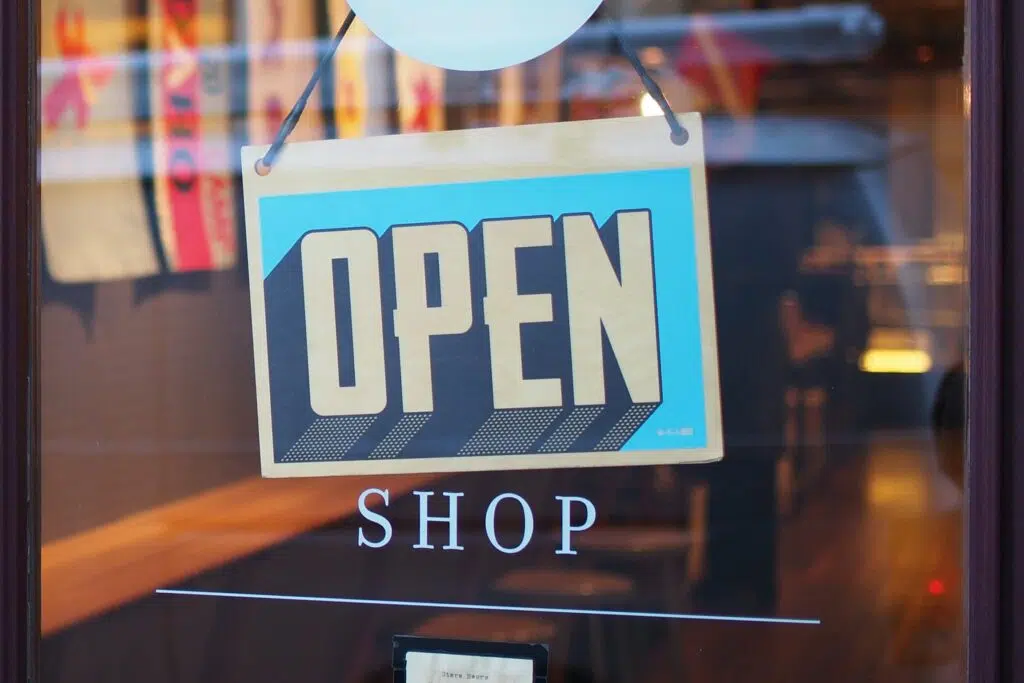If you’re ready to start your own dance studio, one of the most critical elements is deciding where to open up shop. The simple fact is that your location and dance studio size is just as important, if not more important than the name of your business, the classes you teach, and your pricing strategy combined.
Why? Because a studio owner could have the most amazing choreography in the whole world, but if it’s in a bad area or is difficult to get to, it might be harder to succeed. With that in mind, below you’ll find seven things you should take into consideration when choosing the location of your dance studio.
The Basics Of Choosing Your Dance Studio Location
Let’s flex those real estate muscles. Say it with us – Location! Location! Location! Here are seven things every dance studio owner should think about when researching the location of their studio:
- The neighborhood
- The dance studio size and square footage
- Nearby landmarks
- Budget
- Traffic
- Distance from your competitors
- Zoning restrictions
Now that you know the main considerations to keep in mind, and have added them to your dance studio checklist, we’ll break them down a little further to help you in your quest to find the perfect spot for your dance studio.
The Neighborhood
Your potential neighbors are an important factor when choosing your location. If you’re unsure if this is true or not, consider this:
Let’s say you found the perfect studio location. The dance studio size is everything you want it to be, the cost is minimal, and it has all the elements that you would want in a facility. There’s just one little problem. Every day at 3, 7, and 9 p.m., the local transportation system roars through the area and shakes your building for a solid five to ten minutes.
During this time, you have to pause all instruction and wait for the loud noise and shaking to cease. Do you think that wouldn’t get annoying to you, your instructors, and your students? Think again. If transit systems are your neighbor, this could be a very real issue.
Perhaps that’s an extreme case, so let’s imagine a scenario that is slightly more subtle. Your neighbor is a nail salon. All day long, you get the scents of acetone and acrylic chemicals seeping through your walls. It’s not intense, but it’s just enough to mess with your senses and rub some of your customers the wrong way.
When thinking about the neighbors you’ll have near your dance studio, you need to be sure they won’t interfere with your instruction, and that they will have little to no impact on your students.
It’s also important to consider whether or not your neighbors are family-friendly. The last thing you want is to have a dance studio geared towards children seated a few feet or even several yards away from a bar or some other business that wouldn’t be appropriate for children to be around.
Dance studio size and square footage
What’s the average size of a dance studio? According to the Center for Educator Development in Fine Arts (CEDFA), your dance studio size must be able to accommodate: “100 square feet per student. If the studio also serves as a performance space, it should be at least 4,800-5,000 square feet. A ceiling height of 20-24 feet is ideal, but 16 feet is the minimum height.”
The CEDFA also recommends that there “be no posts or columns in the interior space” and that every dancer has “a minimum of 5 feet of barre.” Barres need to be 36-48 inches from the floor, and mounted 6-8 inches from the wall. Finally, there should be mirrors on the walls, and the CEDFA says these mirrored sections should be at least “6 feet by 8 feet and should be attached to the wall approximately 6 inches from the floor.”
In addition to this space for instruction, you will also need plenty of dance studio square footage for things like restrooms, costume and prop storage, office supplies, dance equipment, an office for at least the dance studio manager, and more. The less room you have to work with, the harder running a dance studio will be.
Nearby landmarks
Have you ever listened to the radio and heard advertisements for your local auto dealerships? Most of them will mention nearby landmarks when describing how to get to their location. This makes it easier for someone who’s never been to your business to find it.
When you first open your dance studio, you’ll often be describing how to get to your dance studio location. To have recognizable landmarks that you can mention when giving directions will help your potential clients to find you. Sure, they’ll use Google Maps but it still never hurts to be in a well-known area to assist even the most geographically challenged people in locating your studio.
Budget
The last thing most people want to think about when it comes to fulfilling a dream is the cost of that dream.
Sadly, running a dance studio has many costs associated with it and could alter determining factors like:
- The location you end up in
- Whether you will rent or buy your studio space
- How much room you will have for classes and more
For example, you may desire to have a large studio with several rooms capable of teaching more than one class at a time, as well as a plethora of instructors available for your students so you can meet many needs at once. However, for most the reality is, at least when you are first starting out, you might not have a choice but to have one room for teaching until you can get your business going. Then later, after your studio starts making money, perhaps you outgrow that space and move to a bigger one.
Of course, considering all potential costs ahead of time can also be beneficial when you’re looking into startup funding. The more information you can get in advance, the easier designing a business plan will be, which could result in simplifying the acquisition of loans or other starting capital.
Want to learn more? We covered how much it costs to run a dance studio here!
Traffic
If you are able to open your studio in a building that has plenty of traffic, you’re already ahead of the game in terms of getting your business name out. The more people pass by your business, the better. Then again, too much traffic in the area could pose some other problems.
For example, let’s say you manage to acquire studio space in a shopping plaza that is family-friendly with plenty of foot traffic. On the surface that may sound great, but is there adequate parking for all of that foot traffic? If not, is there nearby parking granting safe and easy access to your studio?
You need a location that allows customers, potential clients, and vendors to be able to park at and easily access your studio. Bonus points if there is public transportation that has a stop at or close to your studio.
Proximity to competitors
You might not think the distance from your competitor matters, but it does. Picture this: Your top competitor has a dance studio near the only flea market in town. If you open near the flea market as well, every time someone is looking for your studio, they may stumble upon your competitor instead of you. Just like that, you risk costing yourself a client. Not good!
Instead, it’s better to choose a location that is far enough away from your competitors without being too far away from your ideal clients. In other words, you don’t have to go to another city, but you don’t want to be a stone’s throw away from them either.
An important side note regarding competing studios: Make sure if you are renting your studio, or even are purchasing one, that your landlord/seller has a non-compete clause in your lease/mortgage.
There have actually been cases of a dance studio opening in the exact same building or shopping plaza as a competing studio. Regardless of who was there first, a situation like this presents a problem for both dance studios. Avoid potential turf wars, and stick to non-compete locations. Surely this town is big enough for both of you!
Zoning restrictions
When finding the perfect dance studio location, zoning obviously matters. Wherever you choose to operate your dance studio, check local laws, rules, and restrictions for the commercial space for your dance studio.
There are several questions you may need to ask your zoning office, and/or city or government officials before signing a lease or mortgage.These questions might possibly include, but aren’t limited to:
- Is the area located and zoned for a dance studio business?
- Are there restrictions regarding how much space you need to accommodate your students?
- What are the fire codes you need to abide by in your location?
- Are there health code requirements, such as how many restrooms you must have?
- If you sell snacks, water, or any other consumable products, what are the restrictions for selling those products?
- Do you need to be aware of any safety regulations concerning wiring, plumbing, cooling/heating, or roofing?
- Are there licenses you must acquire or maintain to operate your dance studio?
Remember, it’s important to get all of this information before buying or renting a dance studio space. After all, not doing your due diligence ahead of time could result in your studio being closed by zoning boards, or by government or law officials. Getting stuck in a year-long lease, or a 15 to a 30-year mortgage, in a space you can’t even operate your business in is a situation nobody wants!
Streamline your Dance Studio
You know that a successful dance studio takes more than just killer dance skills and state-of-the-art sound systems. It also requires a solid business plan, effective marketing strategies, and efficient management of finances.
As a dance studio owner, you have a lot on your plate—mastering various dance styles, enrolling new students, and tracking finances, there’s a lot to juggle! Investing a few dollars in a software solution designed to support the needs of dance studios can take much of the burden off your shoulders.
The Studio Director is an easy-to-use dance studio software that helps you run your business more efficiently and increase revenue.
From managing class schedules and sharing virtual dance classes to handling financial reports and communicating with parents, we’re your partner in dance studio ownership.
The Studio Director saves time on administrative tasks so you can focus on providing quality dance instruction to your students.

Your Partner In Dance Studio Ownership
There are many more things you’ll need to think about when choosing a location for your dance studio, like:
- Rules for painting your studio different colors
- What colors get the most attention
- The type of signage to use
- The taxes for your location
Still, we hope that this has helped you create your initial dance studio location checklist.
When you are ready to open your doors, there will be many moving parts you’ll need to keep track of. Studio Director is a studio management software that can help you stay organized. Our software can assist you with things like scheduling, registration and class confirmations, billing and payments, and much more. Your studio deserves to succeed, and that’s exactly what we’ll help you do.


